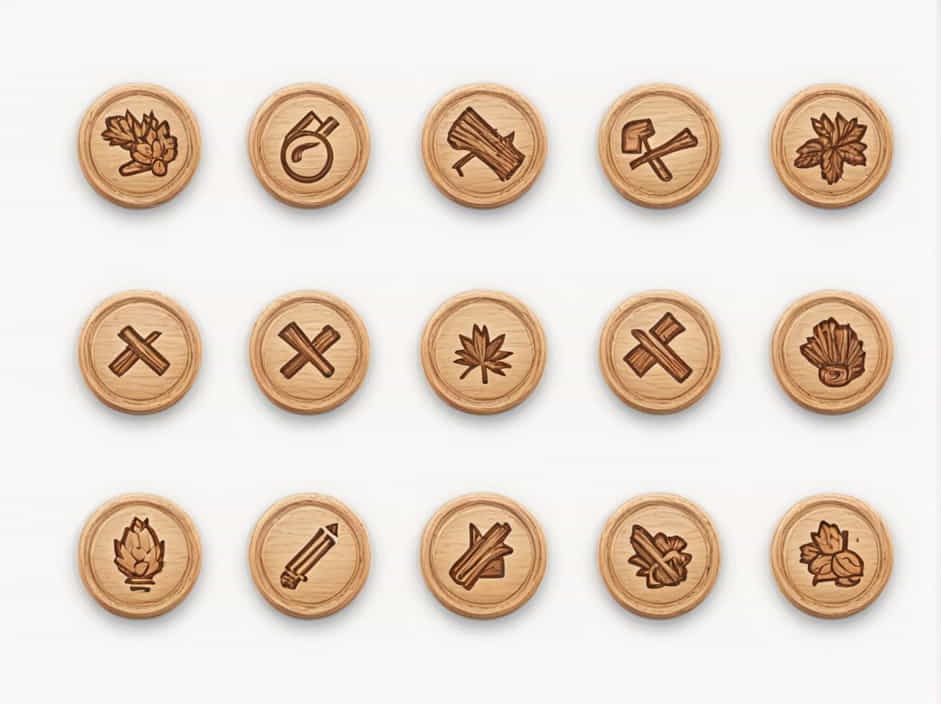When choosing wood for construction, furniture, or crafting, one of the most common questions is: what is the difference between hardwood and softwood? Although the names suggest differences in hardness, the actual distinction is based on tree type and structure rather than density.
Understanding these differences can help you select the right type of wood for your project. In this guide, we will explore hardwood and softwood, their properties, uses, and how to identify them.
What is Hardwood?
Hardwood comes from deciduous trees, which are trees that shed their leaves annually. These trees grow slower than softwood trees, making the wood denser and often more durable.
Characteristics of Hardwood
- Source: Deciduous trees such as oak, maple, and mahogany.
- Growth Rate: Slow-growing, resulting in denser wood.
- Grain Pattern: Often complex and attractive, making it popular for furniture and flooring.
- Durability: Usually stronger and more resistant to wear and tear.
Common Uses of Hardwood
- Furniture: High-quality furniture is often made from hardwood due to its durability and attractive grain.
- Flooring: Hardwoods like oak and walnut are popular choices for flooring due to their strength.
- Musical Instruments: Woods like mahogany and maple are used for guitars, pianos, and violins.
- Boat Building: Certain hardwoods, such as teak, are resistant to water and used in shipbuilding.
What is Softwood?
Softwood comes from coniferous trees, which are trees that have needles and remain evergreen throughout the year. These trees grow faster than hardwood trees, making softwood more abundant and generally more affordable.
Characteristics of Softwood
- Source: Coniferous trees such as pine, spruce, and cedar.
- Growth Rate: Fast-growing, leading to less dense wood.
- Grain Pattern: Often straight and uniform, making it easier to work with.
- Durability: Generally less dense than hardwood but can still be strong and long-lasting.
Common Uses of Softwood
- Construction: Softwoods like pine and fir are widely used in building frameworks.
- Furniture: While less durable than hardwood, softwoods like cedar and pine are still used in furniture making.
- Paper Production: Many softwoods are used in the production of paper and pulp.
- Outdoor Structures: Cedar and redwood are resistant to decay and used for fences, decks, and garden furniture.
Key Differences Between Hardwood and Softwood
| Feature | Hardwood | Softwood |
|---|---|---|
| Tree Type | Deciduous (loses leaves) | Coniferous (evergreen) |
| Growth Rate | Slow | Fast |
| Density | Generally high | Generally low |
| Grain Pattern | Complex and varied | Straight and uniform |
| Durability | High | Moderate to high |
| Common Uses | Furniture, flooring, instruments | Construction, paper, outdoor structures |
How to Identify Hardwood and Softwood
If you are unsure whether a piece of wood is hardwood or softwood, here are some ways to identify it:
-
Check the Grain
- Hardwood usually has a more intricate and dense grain pattern.
- Softwood often has a straighter, more uniform grain.
-
Test the Weight
- Hardwood is generally heavier due to its density.
- Softwood is lighter and easier to handle.
-
Observe the Color
- Some hardwoods like mahogany and walnut have rich, deep colors.
- Softwoods like pine and spruce tend to be lighter in color.
-
Look at the Tree Source
- If the wood comes from a tree that sheds leaves, it’s a hardwood.
- If it comes from a tree with needles, it’s a softwood.
Pros and Cons of Hardwood and Softwood
Hardwood Pros and Cons
✅ More durable and long-lasting
✅ Aesthetic appeal with unique grain patterns
✅ Ideal for high-quality furniture and flooring
❌ More expensive due to slow growth
❌ Harder to work with because of its density
Softwood Pros and Cons
✅ More affordable and widely available
✅ Easier to cut, shape, and work with
✅ Ideal for construction and DIY projects
❌ Less durable than most hardwoods
❌ Susceptible to dents and scratches
Which One Should You Choose?
The choice between hardwood and softwood depends on the project:
- For furniture and flooring → Choose hardwood for its durability.
- For construction and framing → Choose softwood for its affordability and ease of use.
- For outdoor projects → Cedar and redwood (softwoods) resist decay well.
- For decorative purposes → Hardwoods like mahogany and cherry offer a premium look.
Hardwood and softwood each have unique properties that make them suitable for different applications. While hardwood is known for its durability and elegance, softwood is valued for its affordability and versatility.
By understanding their differences, you can choose the best type of wood for your needs, whether for construction, furniture making, or artistic projects.
